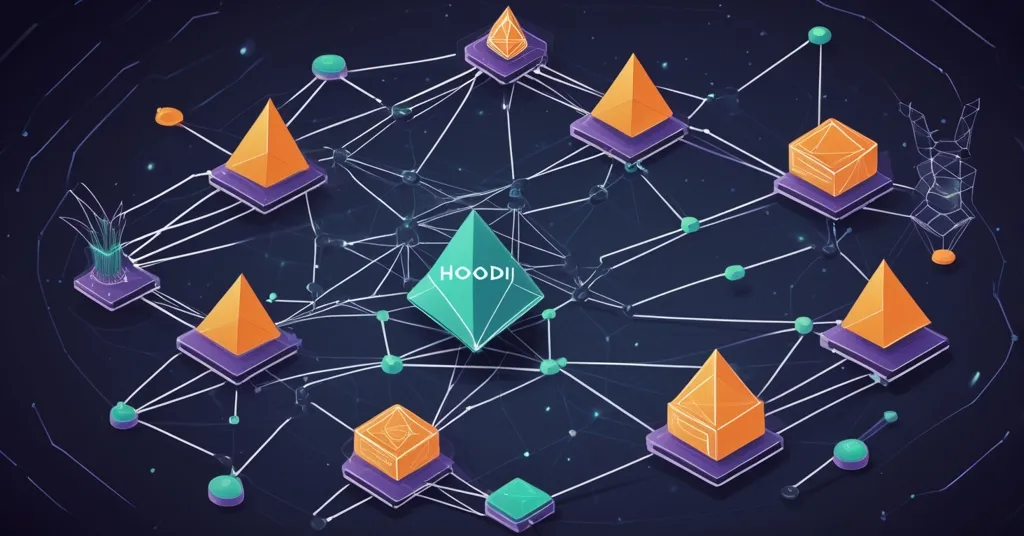Ethereum’s Hoodi Testnet Debuts for Pectra Upgrade and Staking Tests

Ethereum Launches Hoodi Testnet to Test Pectra Upgrade and Staking Operations
Ethereum’s developers have introduced the Hoodi testnet, aiming to provide a stable platform for testing the upcoming Pectra upgrade, validator exits, and staking operations. This move comes after the Holesky testnet faced significant challenges, resulting in a period of non-finality that required community efforts to resolve.
- Hoodi replaces Holesky testnet
- Focuses on Pectra upgrade, staking, validator exits
- Holesky experienced non-finality issues
- Hoodi provides homepage, staking launchpad, Dora the Explorer
- Sepolia recommended for dapps, smart contracts
The Holesky testnet, designed to mimic Ethereum’s mainnet on a larger scale, encountered a critical issue when it stalled for nearly two weeks due to non-finality. Non-finality occurs when transactions are not permanently recorded on the blockchain, leading to network instability. This situation demanded an all-hands-on-deck effort from the Ethereum community, who managed to resolve it by clearing consensus layer data directories and performing checkpoint synchronizations from the last finalized state. It was a stark reminder that even in the world of decentralized tech, stability is crucial. For more details on the resolution process, see this article.
With Hoodi, Ethereum aims to move forward, learning from Holesky’s challenges. Set to start testing the Pectra upgrade on March 26, 2025, Hoodi provides a mainnet-like environment for rigorous testing. Ethereum core developer Parithosh Jayanthi emphasized its importance, stating:
“Hoodi will be the go-to testnet for Ethereum staking pools and node operators to ensure their infrastructure is ready for the Pectra upgrade.”
The Pectra upgrade isn’t just another update; it’s poised to revolutionize Ethereum’s smart contract capabilities and introduce gas fee flexibility, allowing users to pay for transactions with cryptocurrencies other than ETH. This could significantly enhance Ethereum’s user-friendliness and efficiency. For a comprehensive guide on the impact of the Pectra upgrade, check out this Quora thread.
Hoodi offers a suite of tools to aid participants in testing. The homepage provides general information and updates, the staking launchpad allows validators to initiate staking, and Dora the Explorer offers monitoring of network metrics and validator activities. For more resources and tools, visit this page. While Hoodi focuses on staking and protocol-level testing, developers working on decentralized applications (dapps), smart contracts, and other Ethereum Virtual Machine (EVM) functionalities are advised to use the Sepolia testnet.
The launch of Hoodi underscores Ethereum’s commitment to continuous improvement and the resilience of its community. The Pectra upgrade promises to be a game-changer, but as with any uncharted territory, the real test will come when these changes hit the mainnet. Ethereum’s developers are no strangers to challenges, and their ability to address issues like those faced by Holesky bodes well for future developments. For more insights into the launch details and testing of the Pectra upgrade, read further.
While Bitcoin remains the gold standard in digital currencies, Ethereum’s evolution through testnets like Hoodi showcases the vital role of altcoins in pushing the boundaries of blockchain technology. Ethereum’s efforts to refine its infrastructure could pave the way for more innovative decentralized applications, even if Bitcoin’s simplicity and security remain unmatched. For a discussion on the challenges of Ethereum staking operations, see this Reddit thread.
The Pectra upgrade could be the key to unlocking Ethereum’s full potential, but it’s a high-stakes game that requires meticulous testing. As Ethereum navigates this path, it’s essential to maintain a critical eye on the promises of such upgrades; the crypto world has seen its fair share of overhyped expectations.
Key Takeaways and Questions:
- What is the purpose of the Hoodi testnet?
The Hoodi testnet is designed to provide a stable, mainnet-like environment for testing the Pectra upgrade, validator exits, and staking operations.
- What challenges did the Holesky testnet face?
The Holesky testnet experienced a nearly two-week period of non-finality, leading to network instability, increased state storage requirements, and higher demands on validators and node operators.
- How was the Holesky issue resolved?
The issue was resolved through coordinated efforts that involved clearing consensus layer data directories and performing checkpoint synchronizations from the last finalized state.
- What resources are available for participants on the Hoodi testnet?
Participants can access a homepage for general information, a staking launchpad for initiating staking, and Dora the Explorer for monitoring network metrics and validator activities.
- For what purposes should developers use the Sepolia testnet?
Developers focusing on dapps, smart contracts, and other Ethereum Virtual Machine (EVM) functionalities should use the Sepolia testnet.
With Hoodi, Ethereum is once again at the forefront of blockchain innovation, but the journey is filled with both promise and pitfalls. As we watch this unfold, let’s stay grounded in reality, celebrate the progress, and keep pushing for a decentralized future that benefits us all, not just the crypto elite.



